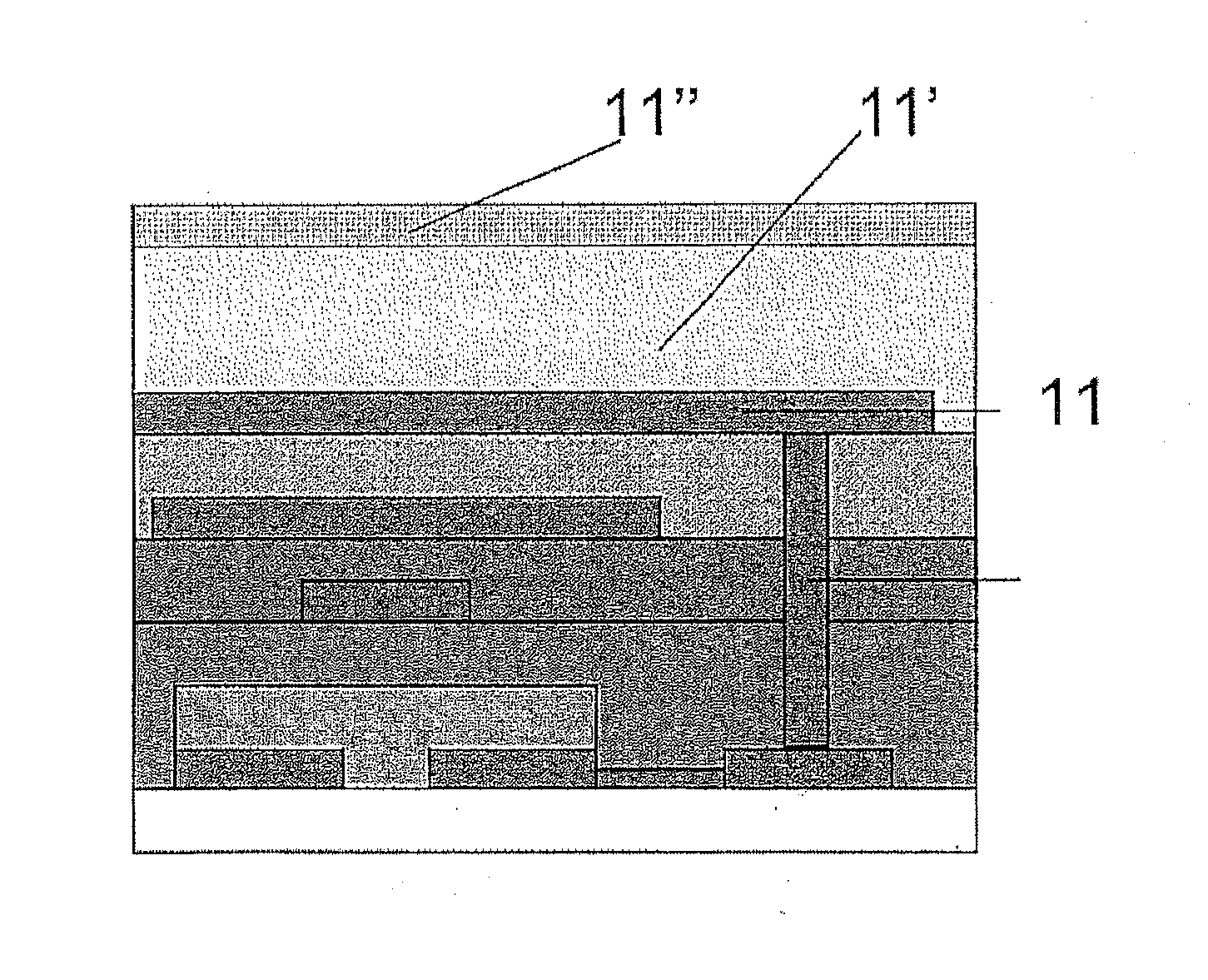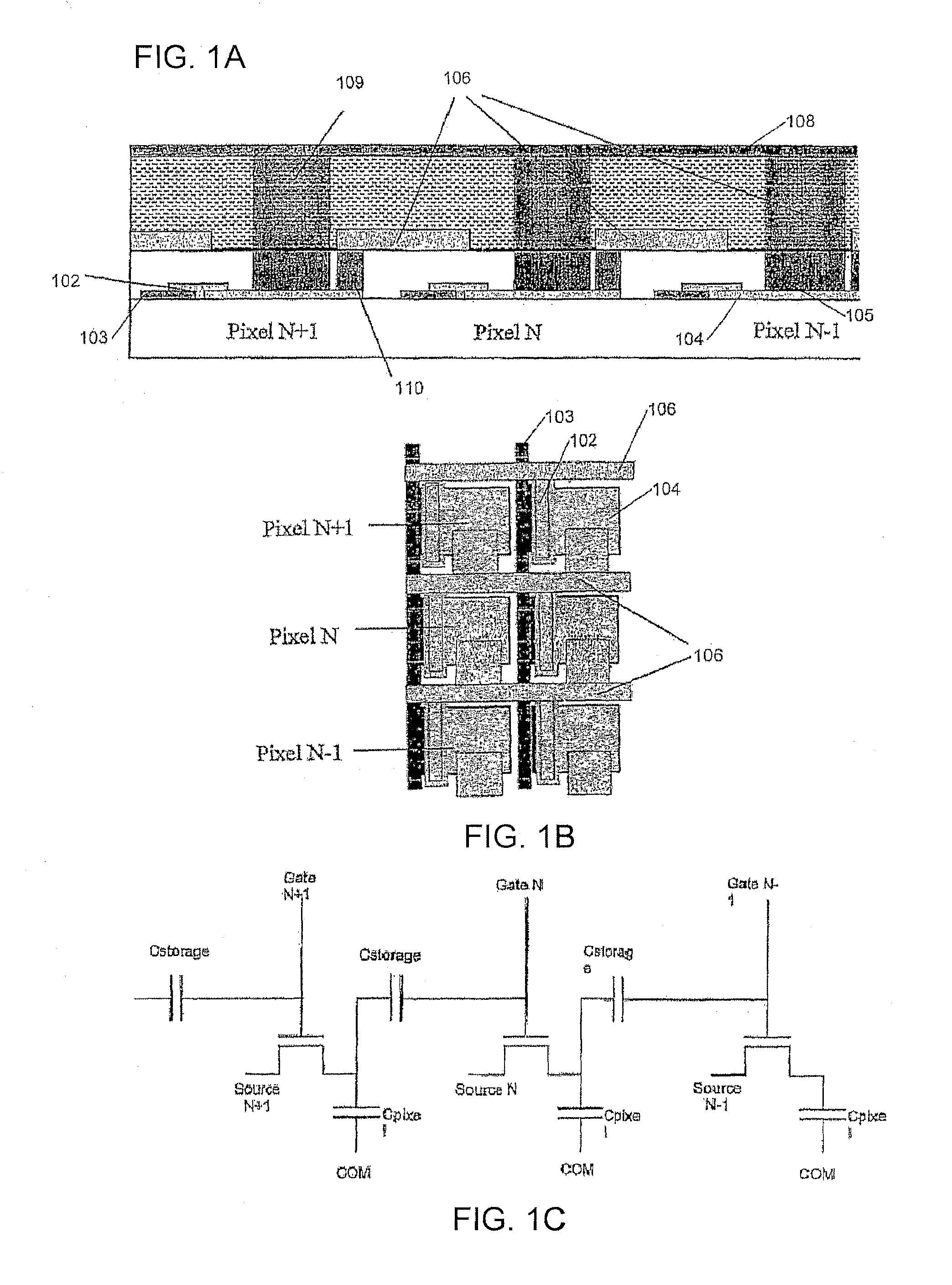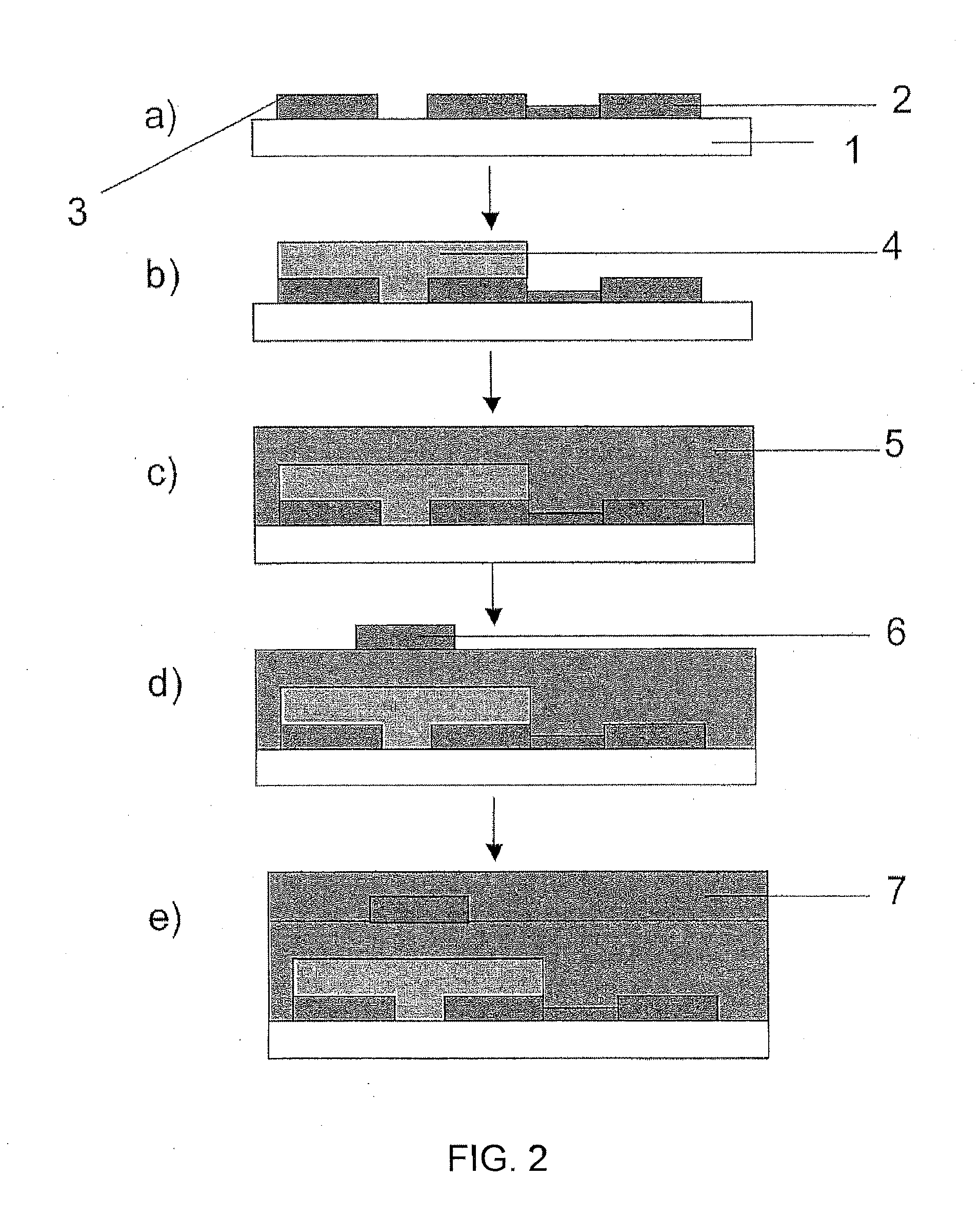Multiple conductive layer TFT
a thin film transistor and multi-layer technology, applied in the direction of semiconductor devices, semiconductor/solid-state device details, electrical equipment, etc., can solve the problems of high capital equipment, materials and manufacturing costs, and difficulty in fabricating metallic interconnect lines with a width of less than 50-100 m, so as to reduce the change of debris-induced electrical shorts between electrodes and achieve high accuracy alignment
- Summary
- Abstract
- Description
- Claims
- Application Information
AI Technical Summary
Benefits of technology
Problems solved by technology
Method used
Image
Examples
first embodiment
[0061]With reference to FIGS. 2 and 3A-3E, the present invention is now described in detail. A substrate 1 is coated with a thin layer of conductive material. The substrate may be either glass or a polymer film. According to a preferred embodiment of the invention the substrate is a plastic substrate, such as a film of polyethyleneterephtalate (PET) or polyethylenenaphtalene (PEN). A first conductive layer 2, is preferably a metallic layer, and most preferably a layer of inorganic metal such as gold or silver; or any metal that adheres well to the substrate and is electrically compatible with the chosen semi-conductor may also be used, or any combination of metals to achieve these effects. A bilayer structure may be deposited, including a seed or adhesion layer in between the layer of metallic material and the substrate. Alternatively, a conductive polymer may be used, such as PEDOT / PSS. The conductive material is preferably deposited using solution processing techniques such as, bu...
second embodiment
[0075]the present invention provides a five layer transistor device structure as is illustrated in FIGS. 4A-4C. As described above, this structure incorporates an additional conductive layer as a capacitor layer and overlying dielectric material layer which allows a lower tolerance for the dielectric layer deposited above the COM layer, for example for thickness of the layer. The addition of both the dielectric layer above the capacitor level and the layer of dielectric material above the COM layer may be used in a capacitor structure where there is a requirement for the capacitance to be high. This five layer sandwich structure is advantageous as it allows a thicker top dielectric layer to be used and allows the patterning of the top pixel electrode to be achieved more readily and allows the possibility of higher Cstorage values.
[0076]With reference to FIGS. 4A-4C which continues to FIG. 2, a second embodiment of the present invention is now described. As stated above, the material...
PUM
| Property | Measurement | Unit |
|---|---|---|
| width | aaaaa | aaaaa |
| wavelength | aaaaa | aaaaa |
| deposition | aaaaa | aaaaa |
Abstract
Description
Claims
Application Information
 Login to View More
Login to View More - R&D
- Intellectual Property
- Life Sciences
- Materials
- Tech Scout
- Unparalleled Data Quality
- Higher Quality Content
- 60% Fewer Hallucinations
Browse by: Latest US Patents, China's latest patents, Technical Efficacy Thesaurus, Application Domain, Technology Topic, Popular Technical Reports.
© 2025 PatSnap. All rights reserved.Legal|Privacy policy|Modern Slavery Act Transparency Statement|Sitemap|About US| Contact US: help@patsnap.com



